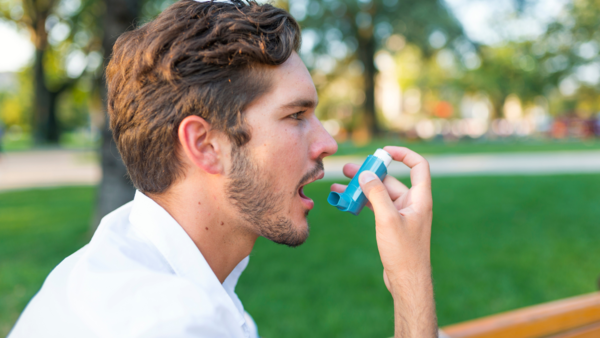Decoding exercise-induced asthma
Exercise-induced asthma, also known as exercise-induced bronchoconstriction, is a condition characterised by asthma symptoms that arise during physical activity. These symptoms typically include:
– Coughing fits
– Tightness in the chest
– Difficulty breathing and wheezing
Unlike traditional asthma, which may be triggered by various factors, EIA specifically manifests during or after exercise, making workouts and sports activities challenging for those affected.

Image: Canva
A study published in Primary Care Respiratory Medicine that EIA is more common than you might think, affecting anywhere from 5% to 20% of individuals without a history of asthma. Even individuals with well-controlled asthma may experience exercise-induced bronchoconstriction, emphasising the need for heightened awareness and management strategies.
The root cause of exercise-induced asthma lies in the inflammation of the airways within the lungs. During physical exertion, rapid and heavy breathing can lead to airway dehydration and irritation. For some individuals, this irritation triggers an inflammatory response, causing the airways to constrict and leading to the hallmark symptoms of EIA.
Contrary to popular belief, EIA isn’t indicative of poor physical conditioning; even elite athletes can grapple with exercise-induced bronchoconstriction.
Several factors can heighten an individual’s susceptibility to EIA, including:
– Age: Children are more prone to EIA than adults.
– Genetics: EIA often runs in families and may coexist with other allergic conditions.
Is there a correlation between sleep and cancer?
– Pre-existing asthma: Individuals with asthma are at an increased risk of developing EIA, particularly if their asthma isn’t adequately managed.
– Environmental conditions: Cold weather and dry climates can exacerbate EIA symptoms, highlighting the importance of modifying exercise environments to mitigate risk.
Diagnosing EIA typically involves assessing symptoms during exercise, though lung function tests may be employed for confirmation. Treatment primarily revolves around the use of inhalers containing medications like albuterol, which are administered before exercise to prevent symptoms.
In addition to medication, adopting proactive measures can help manage EIA effectively:
– Gradual warm-up routines before exercise
– Breathing warm, humid air during physical activity
– Avoiding exercise in areas with poor air quality or high pollen levels

